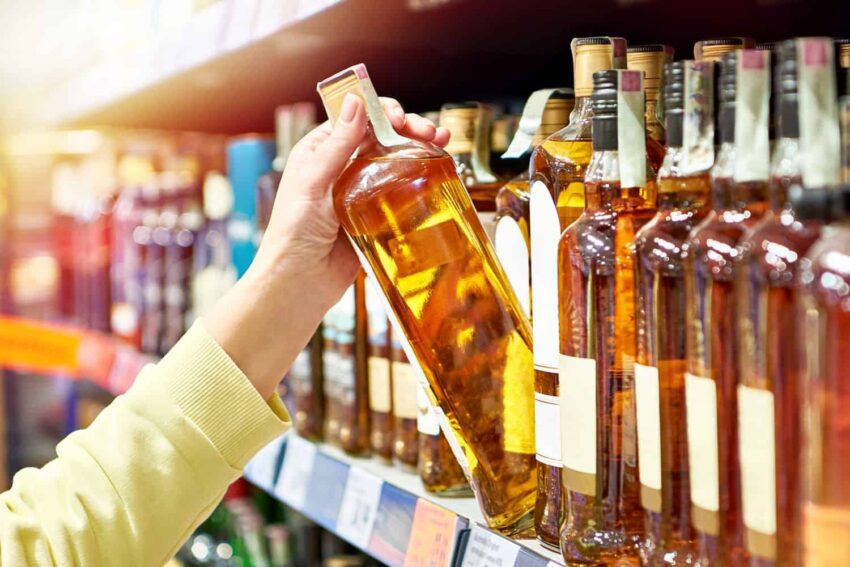
As the problem worsens, so does the concern: Can you really trust what is in your glass?
Are you sure your drink is real? A growing number of South Africans are unknowingly drinking fake alcohol.
A report by Euromonitor has revealed shocking data about the country’s illicit alcohol market. One in five alcoholic drinks contains illicit alcohol, meaning millions may be unknowingly putting their health at risk.
This dangerous rise in fake alcohol is a serious threat to people’s health and a heavy blow to the economy. Billions of rands are lost each year in tax revenue and legitimate business, as fake alcohol floods the market.
As the problem worsens, so does the concern: Can you really trust what is in your glass?
Illicit alcoholic drinks impact
The Drinks Federation of South Africa (DF-SA) led a panel discussion to explore the findings of the report released in June and how consumers can be protected from fake alcohol.
Chairperson of DF-SA and CEO of SAB, Richard Rivett-Carnac, broke down the effects that illegal alcohol has on the country.
If billions from public funds are lost due to the growing rate of the illicit alcohol market, jobs in the industry will be lost.
“Understanding the drivers of illicit alcohol growth and its magnitude is a step in the right direction, but we need stronger collaboration with the industry and government to really start removing the incentives that allow for the illicit market to thrive and intensifying enforcement.”
ALSO READ: Police seize R1.5m fake alcohol in KZN, one arrested
How much illicit alcoholic drinks cost the country
Euromonitor’s report has revealed that the illicit alcohol market has grown by 55% between 2017 and 2024, a growth rate of 6%, outpacing the growth of the legal alcohol market.
The illicit alcohol market is worth an estimated R25.1 billion and has cost the government R16.5 billion in lost tax revenue.
Dr Shamal Ramesar, head of research at DF-SA, highlighted that communities are at risk, and the economy is significantly impacted due to this market.
“Recent testing with the University of KwaZulu-Natal found that many illegal products contain dangerous substances like methanol, which can cause serious harm. Unless we shut down illegal producers and educate consumers, lives will continue to be at risk.”
Protecting people
Acting Commissioner of the National Consumer Commission, Hardin Ratshisusu, said it is important to make people aware of the illicit alcohol market; in doing this, more people will be protected from fake and unsafe products.
He highlighted that people have the right to know what they are buying and consuming. “Tackling this issue takes teamwork through better information-sharing, stronger partnerships, and public education.”
To find out how illicit alcohol was distributed and consumed, Euromonitor surveyed the product’s prevalence in retail and independent traders, as well as the habits and preferences of consumers.
Through desk research, store visits and surveys across multiple geographic and income demographics, Euromonitor illustrated how the illicit trade makes up 18% of the country’s overall alcohol market.
This 18% amounts to the consumption of 773 000 hectolitres — or 77 million litres a year— with an estimated price tag of R25 billion.
ALSO READ: SA loses R30 billion in revenue due to illicit trade in cigarettes and liquor
Counterfeiting is a big problem
Benjamin Rideout, research consultant at Euromonitor International, stated that illicit alcohol in the country is no longer a minor issue.
“Unlike some countries where homebrews are the issue, South Africa is facing large-scale counterfeiting. The situation demands better control over production inputs like ethanol and much stronger enforcement.”
Jan-Harm Swanepoel, Partner at Adams & Adams, highlighted the importance of organised crime in fighting against the problem. “We have the legal tools to fight, but what is now needed is alignment and action.”
Symptoms of poisoning from fake alcohol
According to Interpol, the below are the symptoms of poisoning from fake alcohol:
- Confusion
- Loss of coordination
- Vomiting
- Irregular or slow breathing
- Blue-tinged or pale skin
- Low body temperature (hypothermia)
- Stupor (being conscious but unresponsive)
- Unconsciousness (passing out).
How to spot fake alcohol
Think about the “4 Ps”:
- Place: Only buy your alcohol from reputable and licensed retailers, bars, and supermarkets. Do not buy alcohol from unlicensed market traders or from customers in bars.
- Price: If the product is being sold significantly below its normal price or does not appear to include normal taxes on liquor, then it is likely fake.
- Packaging: Check for poor-quality packaging, spelling mistakes, and unusually shaped bottles. Look for the contact information and address of the manufacturer. If it is missing, the alcohol is fake. Inspect the seal on the bottle. If the seal is broken or damaged, the contents may have been compromised and are not safe to drink. Check for fake bar codes. If you have an app on your mobile device that scans barcodes, scan it and see if it lists the correct product.
- Product: Beware of bad smells! If it smells like paint stripper or nail polish remover, then it’s likely to be one of these products. If it contains particles or sediment, or the contents have separated in the bottle, then the product is likely to have been thinned with tap water.
NOW READ: Budget 3.0: Alcohol and cigarette prices will increase — here’s by how much
